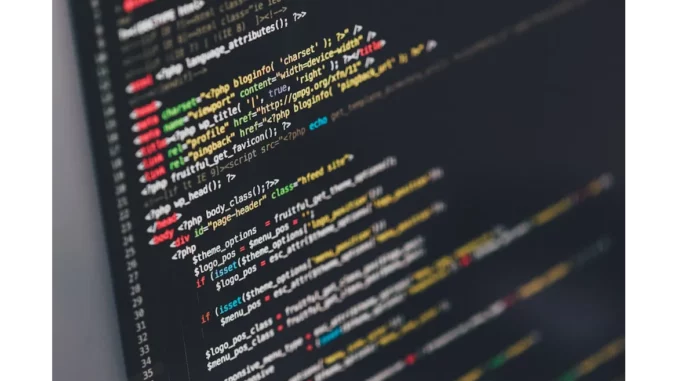
Summary
Blockchain and IoT Convergence: Enhancing Scalability and Efficiency
In the rapidly evolving landscape of the Internet of Things (IoT), efficient data management has become a critical necessity. Traditional centralised systems struggle to cope with the sheer volume of data generated by IoT devices, prompting a shift towards blockchain technology. This decentralised approach promises secure and transparent data handling solutions. Dr. Eleanor Hughes, an expert in both IoT and blockchain, discusses how lightweight consensus algorithms are enhancing performance and scalability in this arena.
Main Article
The Challenge of Scalability
The intersection of blockchain technology with IoT is a burgeoning field, poised to redefine how data is managed. Dr. Eleanor Hughes highlights one of the principal challenges: scalability. “The exponential increase in data from IoT devices is a significant hurdle,” she notes. Traditional blockchain systems are burdened by the requirement for each node to store a complete blockchain copy, leading to high storage demands and increased costs. This redundancy hinders node participation and affects decentralisation.
Sharding and Edge Computing: Innovative Solutions
To address these issues, sharding emerges as a promising solution. This method divides the blockchain into smaller, more manageable segments called ‘shards,’ enabling multiple transactions to be processed concurrently. “Imagine it as creating multiple lanes on a highway, facilitating smoother traffic flow,” Dr. Hughes explains.
Edge computing is another technique gaining traction. By processing data closer to its source rather than transmitting it to a central cloud, edge computing reduces latency significantly. “This is crucial for real-time applications,” Dr. Hughes emphasises. While edge computing raises security concerns, blockchain’s decentralised architecture provides a robust solution.
Off-Chain Storage and Consensus Algorithms
Dr. Hughes also points to off-chain storage as a vital strategy. Off-chain solutions like the Interplanetary File System (IPFS) allow data to be stored externally, while the blockchain manages transactions. This separation ensures scalability and efficiency in data management.
Consensus algorithms form the backbone of blockchain technology. Traditional models such as Proof of Work (PoW) are resource-intensive and unsuitable for IoT devices, which are often resource-constrained. Dr. Hughes advocates for Delegated Proof of Stake (DPoS), a more efficient model that reduces computational burdens. “DPoS elects a smaller group of trusted delegates to validate transactions, lowering energy consumption,” she explains.
Proof of Authority (PoA) also offers a regulated protocol, relying on authorised validators, which is particularly suited for private or consortium blockchains. “Validators’ reputations are at stake, incentivising integrity,” Dr. Hughes adds.
Platforms and Future Prospects
Platforms like EOSIO, which leverage DPoS, present exciting opportunities. “EOSIO provides a scalable and flexible environment for developing decentralised applications. It eliminates transaction fees, a significant advantage over Bitcoin and Ethereum,” Dr. Hughes remarks. The integration of smart contracts within EOSIO enhances its capabilities, allowing for automated execution of predefined actions and streamlining operations within IoT networks.
Detailed Analysis
The convergence of blockchain technology with IoT is more than a technical evolution; it reflects broader trends in data management and security. As IoT devices multiply, the demand for scalable, secure, and efficient data solutions intensifies. Blockchain’s decentralised approach promises to meet these needs, challenging traditional centralised systems.
The introduction of lightweight consensus algorithms like DPoS and PoA not only enhances scalability but also reduces energy consumption—a critical consideration as global energy demands rise. These innovations align with the growing emphasis on sustainability in technology development.
Sharding and edge computing represent a shift towards more efficient data processing and storage solutions. By decentralising these processes, the industry moves closer to realising the full potential of IoT, paving the way for more responsive, real-time applications in various sectors, including healthcare, logistics, and smart cities.
Further Development
As blockchain and IoT technologies continue to evolve, stakeholders must remain vigilant, adapting to new challenges and opportunities. The integration of these technologies is set to transform data management, but it also requires robust regulatory frameworks and industry standards to ensure security and interoperability.
Future developments may focus on refining consensus algorithms and enhancing off-chain storage solutions to further improve scalability and efficiency. The potential for blockchain to address IoT’s data challenges is immense, but as Dr. Hughes aptly puts it, “We’re only scratching the surface of what’s possible.”
Stay connected for further insights and updates on how blockchain technology continues to revolutionise the IoT landscape, with potential breakthroughs on the horizon.

